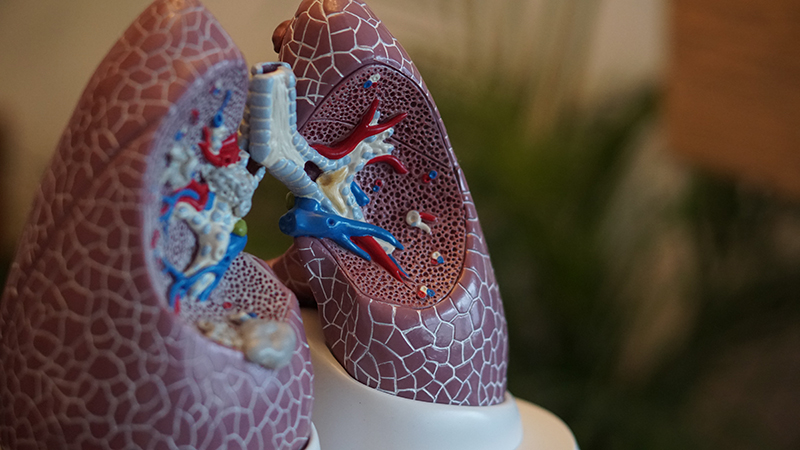 Lung Cancer
Lung Cancer
Lung cancer survival rates are improving for everyone: American Lung Association
Lung cancer survival rates are improving for everyone, including people of colour, according to the American Lung Association’s 2023 “State of Lung Cancer” report, released today.
The five-year lung cancer survival rate for people of colour has increased by 17% in the last two years, helping close the health disparity gap.
The organization’s sixth annual “State of Lung Cancer” report highlights how the toll of lung cancer varies by state and examines key indicators throughout the U.S. including new cases, survival, early diagnosis, surgical treatment, lack of treatment and screening rates. The report found that the lung cancer five-year survival rate increased 22% nationally to 26.6% from 2015 to 2019. In addition, the survival rate has increased at a faster pace among communities of color, so that it is no longer significantly lower compared to white individuals.
“Because of the incredible work of the lung cancer community, including non-profits, researchers and healthcare professionals, more people are surviving lung cancer. We are encouraged by the work being done to eliminate lung cancer stigma, increase lung cancer screening and improve lung cancer treatment,” said Harold Wimmer, President and CEO of the American Lung Association. “However, while we have seen an improvement in lung cancer survival rates for people of color, more work needs to be done to address persistent health disparities. Overall, people of color who are diagnosed with lung cancer are less likely to be diagnosed early, less likely to receive surgical treatment and more likely to receive no treatment.”
The report also closely tracks lung cancer screening nationally and by state. Lung cancer screening with annual low-dose CT scans for those at high risk can reduce the lung cancer death rate by up to 20%. In 2022, only 4.5% of those eligible were screened. Some states, such as California and Wyoming, had screening rates as low as 0.7% and 1.0%. The best state in the country for lung cancer screening was Massachusetts at 11.9%.
Close to 238,000 people in the U.S. will be diagnosed with lung cancer this year. The 2023 “State of Lung Cancer” report found the following national trends in survival rates, early diagnosis and treatment of the disease:
Survival Rate: Lung cancer has one of the lowest five-year survival rates because cases are often diagnosed at later stages, when it is less likely to be curable. The national average of people alive five years after a lung cancer diagnosis is 26.6%. Survival rates were best in Rhode Island (33.3%) and worst in Oklahoma (21.2%).
Early Diagnosis: Nationally, only 26.6% of cases are diagnosed at an early stage when the five-year survival rate is much higher (63%). Unfortunately, 44% of cases are not caught until a late stage when the survival rate is only 8%. Early diagnosis rates were best in Massachusetts (33.3%), and worst in Hawaii (20.3%).
Surgery as First Course of Treatment: Lung cancer can often be treated with surgery if it is diagnosed at an early stage and has not spread. Nationally, 20.8% of cases underwent surgery. Surgical treatment rates decreased by 4% in 2020, likely due to the impact of the COVID-19 pandemic on utilization of medical care.
Lack of Treatment: There are multiple reasons why patients may not receive treatment after diagnosis. Some of these reasons may be unavoidable, but no one should go untreated because of lack of provider or patient knowledge, stigma associated with lung cancer, fatalism after diagnosis or cost of treatment. Nationally, 20.6% of cases receive no treatment. Lack of treatment rates increased by 5% in 2020, likely due to the impact of the COVID-19 pandemic on utilization of medical care.
Health Disparities: The report also highlights that, while the survival rate for people of color increased significantly, people of color who are diagnosed with lung cancer still face worse outcomes compared to white individuals, including less likely to be diagnosed early, less likely to receive surgical treatment and more likely to receive no treatment.
Medicaid Coverage: Fee-for-service state Medicaid programs are one of the only healthcare payers not required to cover lung cancer screening for high-risk populations. The Lung Association analyzed lung cancer screening coverage policies in state Medicaid fee-for-service programs to assess the current status of lung cancer screening coverage for the Medicaid population and found that 49 states’ Medicaid fee-for-service programs cover lung cancer screening, and one program does not provide coverage.
Support Our Journalism
We cannot do without you.. your contribution supports unbiased journalism
IBNS is not driven by any ism- not wokeism, not racism, not skewed secularism, not hyper right-wing or left liberal ideals, nor by any hardline religious beliefs or hyper nationalism. We want to serve you good old objective news, as they are. We do not judge or preach. We let people decide for themselves. We only try to present factual and well-sourced news.






